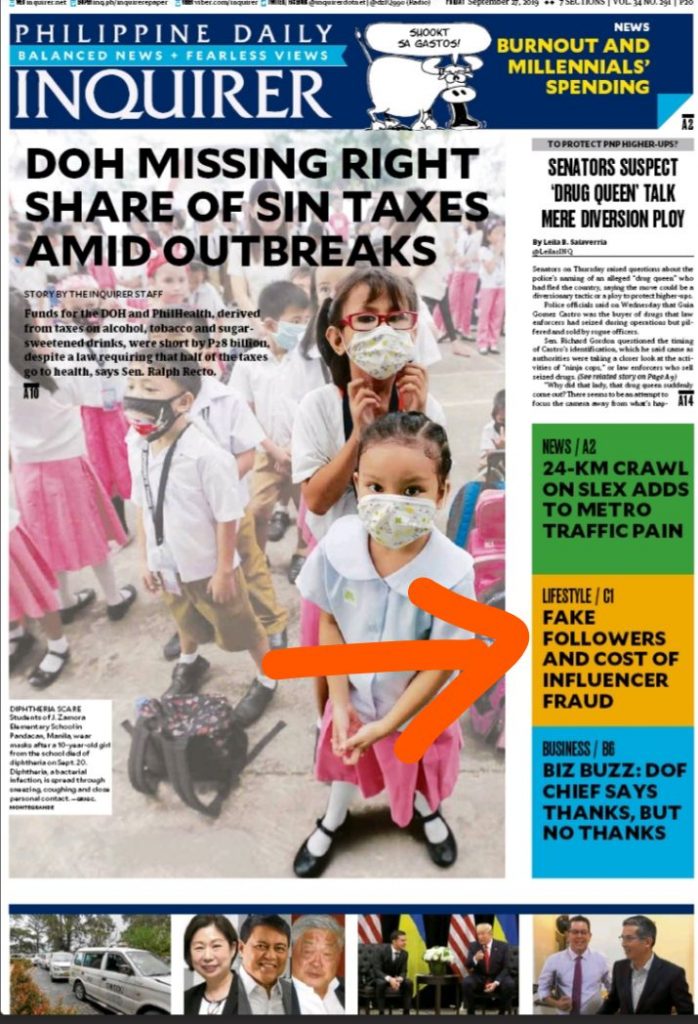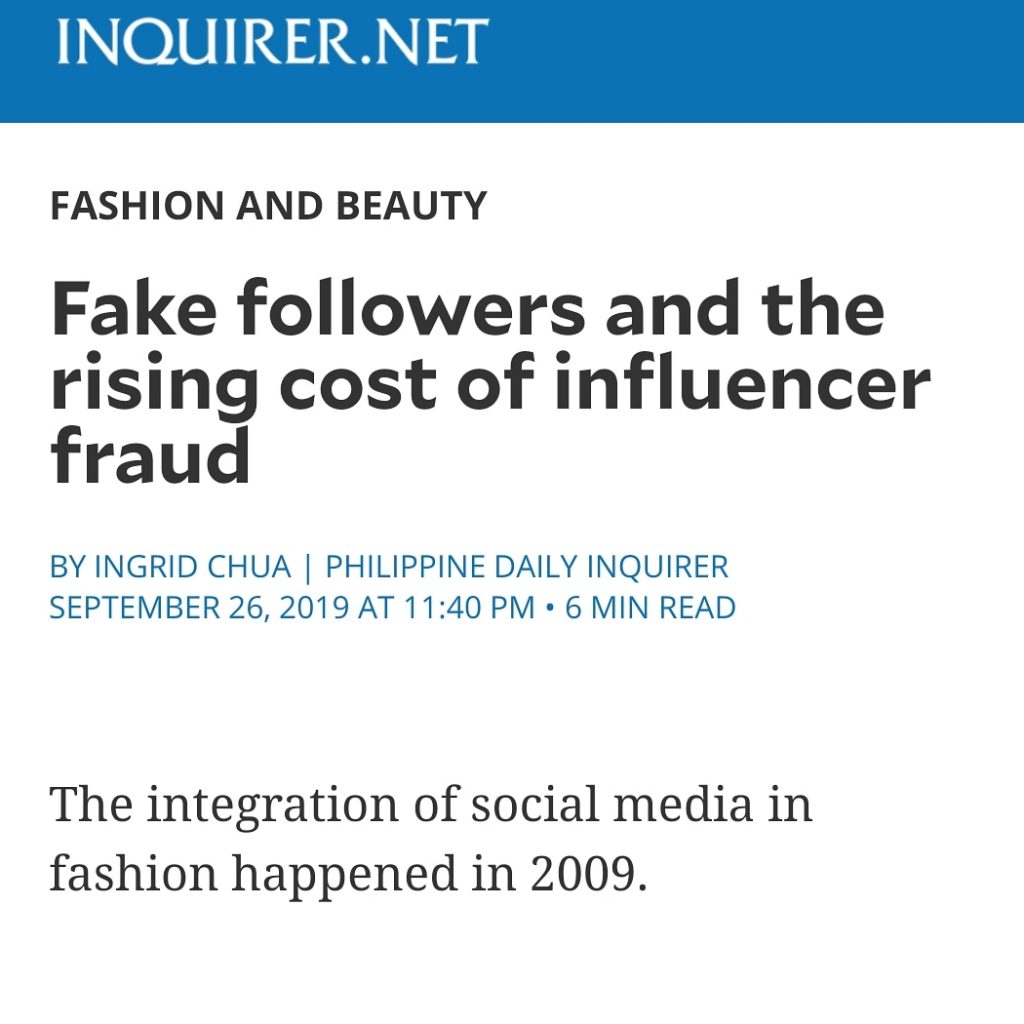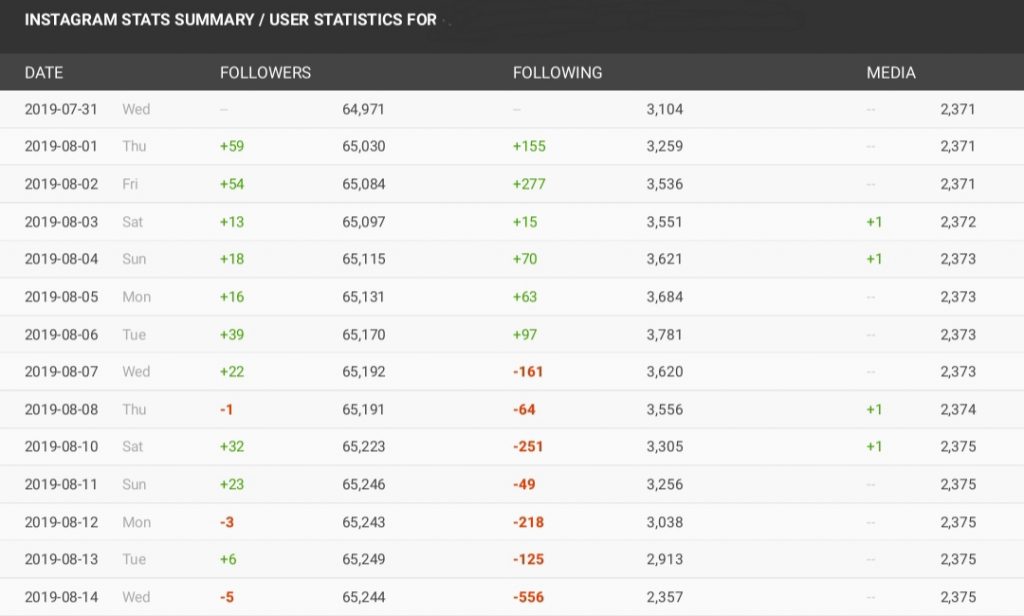Hi everyone!
It seems that my story, which was published earlier on print and online (with functioning links), suddenly disappeared from the Inquirer digital site. Print version of my story made it to the front page headline though.


As for the disappearance of my story online, I am just as baffled as you are, and have been told a few versions of why the article may have disappeared. But I shall reserve telling that story for another day (also because I am still investigating what happened and am still trying to get to the bottom of it).
Anyway, this is the article which was published on Inquirer online earlier, and I am cross- publishing it here on my blog so you can still read it. Thank goodness I have my original copy right here, and thank goodness for my blog!
As an added bonus, I have also included some updated analytics reports of these ethically challenged influencers (whose accounts shall remain unnamed).
This story will not be buried because it needs to be told. It is timely. It is relevant. Now, whoever reads this and gets offended by it (because perhaps they’re guilty of engaging in these rather unethical practices to procure followers), may I suggest that you start being more honest with your Instagram accounts so your analytics reports reflect your honesty and authenticity, instead of feeling incensed about how your dubious practices are revealed? INSTAGRAM SHOULD NOT BE YOUR LIFE OR YOUR END ALL! Being instagram- famous should never be your goal and purpose in life!
FAKE FOLLOWERS AND THE RISING COST OF INFLUENCER FRAUD
By: Ingrid Chua (instagram: @thebaghag)
Published on September 27, 2019
Philippine Daily Inquirer
The integration of social media into fashion happened in 2009.
Dolce & Gabbana took the unprecedented move of planting fashion bloggers on the front row of their Fall/ Winter 2009 show, alongside top editors and international buyers. Dennis Valle, then Chief Digital and Marketing Officer of Dolce & Gabbana who was instrumental in the implementation of that marketing decision said, “At the time, these bloggers were outsiders. Nobody knew them. PR teams were snubbing them. I had no idea that my photo of these bloggers sitting beside Anna Wintour on the Financial Times was going to change the era of print fashion magazines and the industry.” Valle continued: “After that day, bloggers became the new wave of fashion communication. A few years back, fashion weeks were the playgrounds of editors, stylists, and buyers. Since then, there has been a noticeable shift in the fashion industry and it’s clear that digital style icons are leading the charge. Social media channels have since become important if not necessary in the fashion industry.”
At the time, fashion bloggers worked with affiliate marketing companies to incorporate links with unique codes from partner e-commerce stores into their blogs. These embedded links allowed their audience to buy merchandise (via redirection from their blog to the affiliate e-commerce stores), and the bloggers receive commissions based on the amount of sales generated by their unique links. This was one of the tangible ways to determine how much influence bloggers had—it was based on click- throughs and sell- throughs generated by each blog publisher.

Fast forward to 2019, Instagram influencers have overtaken bloggers, and though the narrative of the platform being a numbers game has not really changed much, it has become difficult if not impossible to equate follower count with influence to affect sales. According to Statista, Instagram has 1 billion users as of 2019. 50% of those users are on the platform daily, and they spend an average of 53 minutes on it. 71% are aged between 25 to 34, and 58% of the users are female.
Click Farms
According to Mediakix, marketers will spend US$8.5 billion on Instagram influencers this year. A Business of Fashion article written by Chavie Lieber (published July 2019), noted that “influencer fraud– whether it’s buying followers or hiring ‘click farms’ to like or comment on posts— will cost advertisers $1.3 billion this year, according to a study by the cybersecurity company Cheq and the University of Baltimore.”
At a meeting with an executive from a local multinational corporation, I was told that non-celebrity influencer (30,000 followers+) rates start at PhP 30,000 (about $600) per post. An Instagram campaign can consist of anywhere between one to five static Instagram posts, and can also include a series of Instagram stories.
This executive said their company contracts influencers according to their follower count for exposure of a new product or service and for event attendance. An influencer’s follower count is directly proportional to the rates they’re paid– the higher the influencer’s numbers, the higher the rates. Therefore it isn’t difficult to see why many want to become Instagram influencers today. When you have amassed a good number of followers, the amount of money you receive as a “professional” Instagram influencer is decent, especially for the amount of work involved. And because most advertisers and brands pay and base their prices on follower count rather than on authentic engagement and sales conversion (which in itself is not easy to prove), this only serves to encourage ethically challenged influencers to buy followers, to artificially inflate follower count, or to “manipulate” the Instagram algorithm to increase their numbers.
Buying Followers
It’s easy for Instagram users to buy followers and to contract third- party services to manage likes and increase engagements. The same Business of Fashion article mentioned that influencers are able to pay as low as $16 for 1,000 followers. Most of these companies offering followers and likes for low prices use internet bots– software applications that perform semi- automated or automated tasks. After paying for the service, the Instagrammer almost immediately starts to get a trickle of new followers. In 2014, Instagram clamped down on this practice by eradicating bots and fake accounts which resulted in between a 20% to 70% drop in follower count among influencers. And while Instagram supposedly continues to purge fake accounts from their platform, third- party service companies that sell followers are still burgeoning, a clear sign that the industry is only getting bigger.

Follow for Follow, Like for Like
Instagram influencers can also increase follower count by “mass- following” hundreds of other Instagrammers. This practice is done with the assumption that those who get followed will reciprocate by following back. A week later, the influencer unfollows the same people he/she followed earlier, unbeknownst to those who had followed the influencer back. This is an artificial way to inflate follower count because it is based on a “follow- for- follow” practice rather than on the genuine interest in the influencer’s content. “Likes- for- likes” works in a similar way. Influencers follow hashtags, do “mass likes” and leave one word comments or single emoticons/ emojis on every photo under those hashtags, with the expectation that the other Instagrammers whose photos got liked, will return the engagement.


Instagram Pods
Other influencers try to increase numbers by creating “Instagram pods” which most likely consist of their fellow influencers and friends. In this case, each pod member is tasked to comment on and like fellow members’ posts to boost engagement rate and manipulate Instagram’s algorithm, making those posts or profiles more visible to potential followers. If you carefully dissect the Instagram posts of these influencers, you will notice the same group of people, and some of their comments might even be unrelated to the influencer’s photo captions– because they did not bother to read them. According to University of Baltimore professor Roberto Cavazos who was interviewed for the Business of Fashion story, these “transactions are clearly not what brands have in mind when creating and paying for campaigns.”
While a handful of international brands have begun to scale back on working with influencers who have large numbers but have purportedly- bought followers, many advertisers continue to fall prey to contracting influencers who artificially inflate their following, likes, and engagement. Annie Ringor, President of Bridges PR@Com has been working with consumer companies on influencer marketing campaigns. She commented that “the marketing budgets of companies are allocated differently now. It’s become challenging to sell traditional print to our clients, though easier if there are online components. But overall, the allocation is moving towards online sites and influencers. At times, clients even take away the budget for online magazines and move them to influencers with higher reach. Our clients come to us with preferred names, and some ask us for recommendations. If the names they submitted have questionable follower counts, we do warn the clients immediately to save them from wasting their campaign funds on the wrong influencers.”
Managing expectations
Brands need to manage expectations and identify key priorities when allocating influencer marketing funds: are they contracting influencers to gain more exposure for their products or services, or are they hoping these influencer can take marketing and promotions a step further by actually affecting sales figures? That’s why research on the personalities of each of the influencers they plan on contracting has become an important step.
Lisa Maynard- Atem, an independent social media strategist and former digital director of Harrods of London, thinks that “brands have begun to understand that whilst followers and likes are great, they are ultimately just a vanity metric and don’t necessarily guarantee sales. There is also the more pressing question of brand loyalty. I see many influencers working with several brands at a time. Whilst I understand the financial reasons behind it, as a consumer it does make me think twice about their loyalty to the brand. If you are working with one brand today and a different brand tomorrow, how much are you really invested in them? Do you actually believe in what the brand stands for or are you just collecting your paycheck?”
“Ultimately, whilst brands have become more intelligent in the way they approach influencer marketing, I believe that influencers, for as long as they continue to be the popular marketing choice, will always have the advantage.”
$1.5-B fraud
Influencer fraud is projected to cost advertisers $1.5 billion next year. Ethically challenged influencers today continue to take shortcuts to inflate their numbers. They continue to buy followers, likes, and engagement, and somehow these purchases from follower factories and “click farms” still manage to get past Instagram’s regulators.
Companies will need to invest in research and exhaustively study today’s digital marketing landscape to prevent themselves from becoming victims of influencer fraud. This is why it has become important, if not paramount, for them to utilize social media analytics and tracking tools.
Free third- party services like Social Blade can already reveal basic information about an influencer’s follower/ following growth pattern and engagement rate. Paid- service analytics companies produce more comprehensive reports and can dissect influencers’ follower demographics and authenticity.
In the end, brands, advertisers, and marketing agencies should know not to rely just on follower numbers or follower authenticity, they should also be conducting in- depth research into the influencers’ own authenticity and integrity as well. After all, they are investing big marketing money on them and will continue to do so, until the next big marketing platform comes along.
